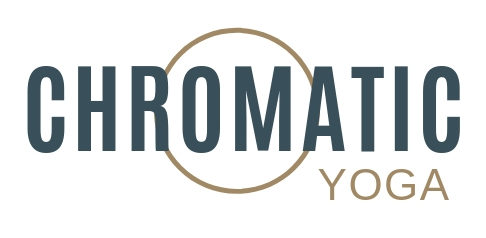Engagment Vs. Alignment
There are so many opinions about how to do each posture in yoga, and they each of their benefits and their draw backs. The major confusion however comes from not understanding the difference between a muscle engagement and an alignment. Alignment is a placement of your bones or a set of joint articulations. A muscle engagement within a static posture is what we would call isometric – engagement without movement. To help you understand, get into chair pose with your knees bent. Ask yourself if your quads are active? Yes, of course they are, but the quads are the muscles that straighten your legs and yet your knees are still bent. THIS is why so many get confused, you can engage muscles that support the alignment, and you can engage muscles that appose the alignment.
Balancing Action Vs. Fundamental Action
In Chromatic Yoga I created two terms to help understand isometric engagements. Balancing action is the muscle engagement that apposes the alignment – Quadriceps activation in chair pose is the perfect example. Fundamental Action is an isometric engagement of same muscles as the joint alignment, so in the case of chair pose you would have to engage your hamstrings which is challenging due to the relationship to gravity in that posture. An easier example is plank pose, you have to activate your triceps in order to keep the elbows straight. To clear up the how to of chaturanga I have created the following video.
See the full blog and chaturanga part 2 on theyogimatt.com/free
The Chaturanga Breakdown
Patrick's Top Tips
Peak Postures to use:
Adduction: Frog, Wide Legged Forward Fold, Crow
Ball Rolling the Piriformis with Pam Godbois
What is the Piriformus? The Piriformis is one of the 'deep 6' hip muscles responsible for external rotation of the thigh bone. It is also a muscle that sits right in the middle of the gluteals and often responsible for that pain you get right in the middle of your...
Changing the Patterns of the Mind with Pam Godbois
Thought Patterns Our thought patterns develop as a result of our life experiences. The interesting thing is, it doesn't take a large number of negative experiences to product negative thought patterns. We all have patterns that do not serve us, the sneaky truth about...
Ayurvedic Tip From Genell Huston: Tongue Scraping Detox
Our tongues have so much to share with us! In Ayurveda, as well as other Eastern medicines, the tongues are a representation of our whole body and organs. There is a story on all of our tongues and we can start to...
Water Meditation with Corinne Farrell
The Flow of Life Embracing the flow of life can be challenging, but with the right tools it is possible. Picture the river of your life, it might be deep, it might be rapid, and there may even be several obstacles standing in your way. Are you in the flow or are you...
Are You Doing This in Your Backbends? With Pam Godbois
Gluteus Maximus In the practice of yoga, I often hear well meaning teachers use the cue “relax the butt” positions that require hip extension, like backbends. While I get the intention is to decrease the risk of lumbar spine compression in back bends, my question is,...
3 Steps to Avoid Shoulder Impingement in Downward Dog with Matt Giordano
Alginment Ideals In Chromatic Yoga we look at alginment from the standpoint of bennefits and drawbacks wrather than right or wrong. There are thousands of alignments that are excellent and only a few that have the potential for harm that we would likely opt out of. In...







